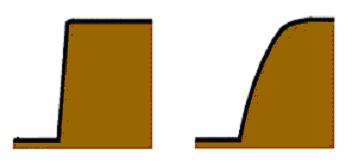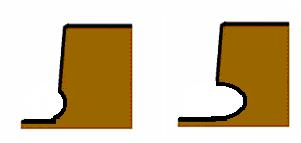Arriba - Uma beleza perigosa EarthCache
Arriba - Uma beleza perigosa
-
Difficulty:
-

-
Terrain:
-

Size:  (other)
(other)
Please note Use of geocaching.com services is subject to the terms and conditions
in our disclaimer.
[PT]
Para logares responde por e-mail ás seguintes questões.
Após enviar o e-mail pode logar a earthcache. Caso seja necessário entrarei em contacto.
Qual o comando aproximado da Arriba perto do GZ e o seu tipo de formação?
Qual a definição da crista da arriba?
Qual o tipo de desgaste da sapa?
Qual o estado da arriba?
[EN]
To make a log, respond by e-mail to the following questions.
After you send the email you can log the EarthCache. If necessary I will contact you.
How high approached the cliff near of GZ and the type of formation?
What is the definition of the crest of the cliff?
What kind of sap wear?
What is the state of the cliff?
[PT]
Arriba:
Forma particular de vertente costeira, com declive forte (15º a 90º).
Uma arriba ou costa alta é um contacto directo do mar com a parede rochosa.
As arribas podem ter altura (comando) muito variável, desde poucos metros a várias centenas de metros.
As arribas mais altas são formadas nas rochas mais resistentes à erosão (granitos, calcários dolomíticos, etc.). Porém, também é frequente a ocorrência de arribas, normalmente com alturas mais pequenas, em rochas pouco consistentes (areias das dunas costeiras, tilitos, etc.).
[EN]
Arriba = High cliff coast
It is a particular form of coastal strand, strongly sloping (15° to 90°).
A cliff is either direct contact of the sea with the rocky wall.
The cliffs can be very variable height from a few meters to several hundred meters.
The highest cliffs are formed in rocks more resistant to erosion (granite, dolomitic limestone, etc..). But it is also a common occurrence of cliffs, usually with smaller heights, in rocks inconsistent (coastal sand dunes, tillites, etc..).
[PT]
Forma da Arriba
 A parte superior da arriba, onde se verifica a ruptura do declive que corresponde à transição da face da arriba para a zona superior, designa-se por crista da arriba. Esta, pode ser bem definida, correspondendo ao vértice de um ângulo quase recto, ou ser mal definida, existindo apenas variação progressiva do declive.
A parte superior da arriba, onde se verifica a ruptura do declive que corresponde à transição da face da arriba para a zona superior, designa-se por crista da arriba. Esta, pode ser bem definida, correspondendo ao vértice de um ângulo quase recto, ou ser mal definida, existindo apenas variação progressiva do declive.
[EN]
Form of Cliff
The top of the cliff, where there is a break of slope that corresponds to the transition to the cliff face of the upper part, called a crest of the cliff. This can be well defined, corresponding to the vertex of an angle almost straight, or is poorly defined, with only gradual change of slope.
[PT]
 Na base da arriba existe uma zona de desgaste provocada pela actuação das ondas, que se designa por sapa, e que pode ser mais ou menos pronunciada. É a progressiva evolução desta sapa que tira sustentação à parte sobrejacente da arriba, acabando esta por cair, e que tem como consequência que toda a face da arriba acabe por recuar na direcção do continente.
Na base da arriba existe uma zona de desgaste provocada pela actuação das ondas, que se designa por sapa, e que pode ser mais ou menos pronunciada. É a progressiva evolução desta sapa que tira sustentação à parte sobrejacente da arriba, acabando esta por cair, e que tem como consequência que toda a face da arriba acabe por recuar na direcção do continente.
A evolução de arribas resulta fundamentalmente de desmoronamentos e quedas de blocos, correspondentes à queda de fatias geralmente estreitas das fachadas rochosas.
[EN]
On the base of the cliff there is a zone of wear caused by wave action, designated by sap (base, foot), and that can be more or less pronounced. It is the progressive evolution of this sap that takes support to the overlying part of the cliff, ending by this fall, and which has the consequence that the whole face of the cliff eventually back in the direction of mainland.
The evolution of cliffs mainly a result of landslides and falling blocks, corresponding to the fall of generally narrow slices of the rock facades.
[PT]
 Quando os processos marítimos deixarem de actuar sobre a base da arriba, o perfil desta modifica-se. Os materiais provenientes dos processos sub-aéreos sobre a arriba deixam de ser evacuados pela agitação marítima, acumulando-se junto à base, constituindo um talude, atingindo o estado de arriba inactiva, tornando-se numa arriba fóssil se existir um aumento significativo de tempo de inactividade por parte das marés.
Quando os processos marítimos deixarem de actuar sobre a base da arriba, o perfil desta modifica-se. Os materiais provenientes dos processos sub-aéreos sobre a arriba deixam de ser evacuados pela agitação marítima, acumulando-se junto à base, constituindo um talude, atingindo o estado de arriba inactiva, tornando-se numa arriba fóssil se existir um aumento significativo de tempo de inactividade por parte das marés.
[EN]
When the marine processes stop acting on the base of the cliff, that profile is modified. The materials from the sub-aerial processes on the cliff are no longer evacuated by maritime agitation, accumulating near the base, forming a slope, reaching the inactive state, becoming a fossil cliff if there is a significant downtime by the tides.



Additional Hints
(Decrypt)
Nobeqrz b TM cryn cenvn.
Nccebnpu gur TM guebhtu gur ornpu.